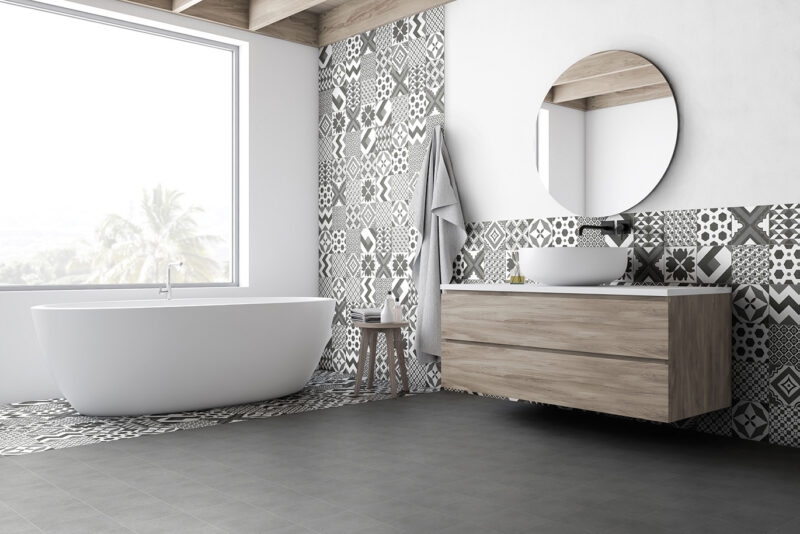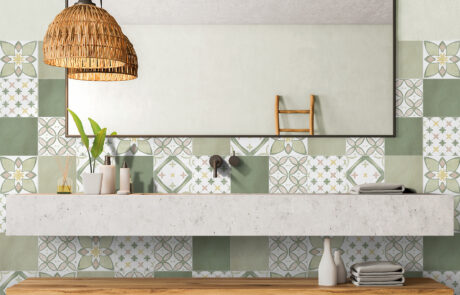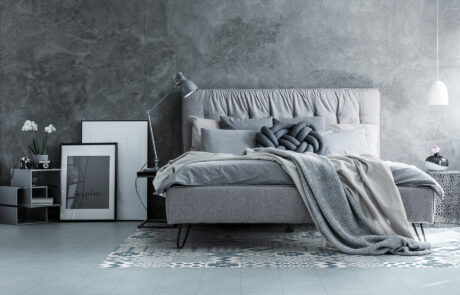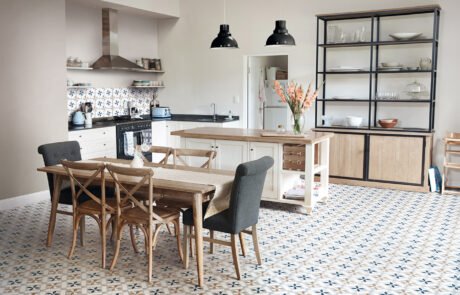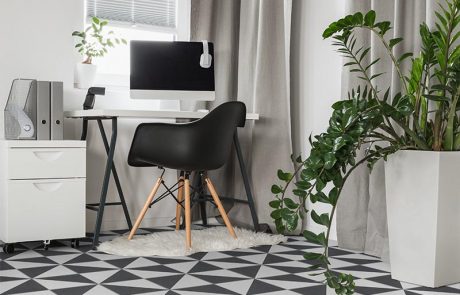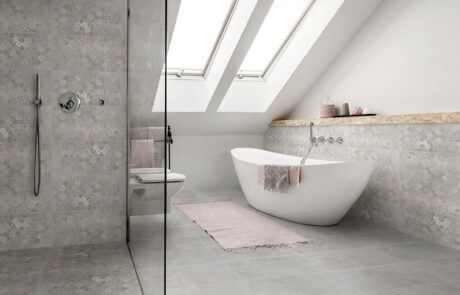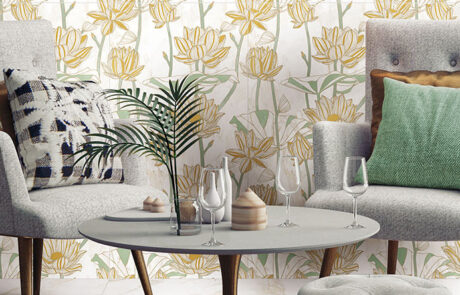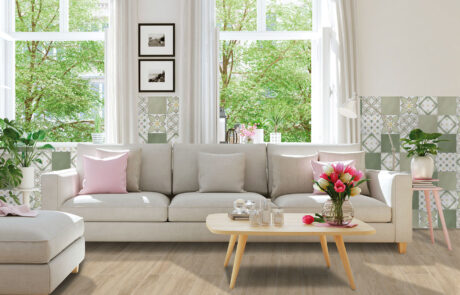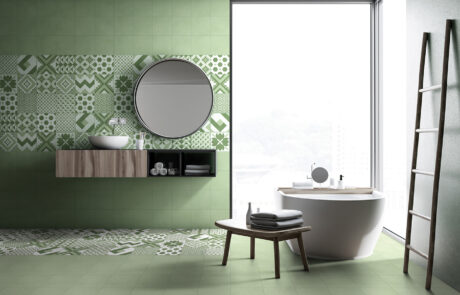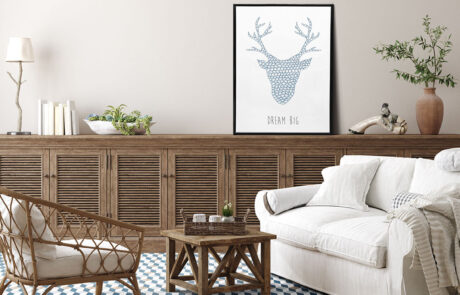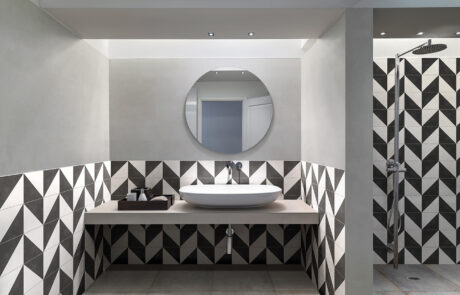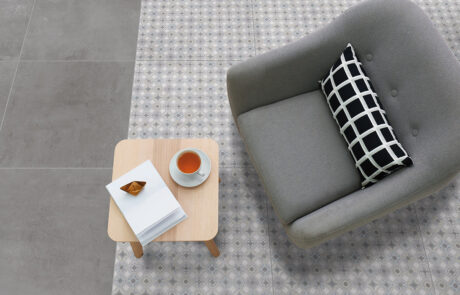In every interior design project, you should take care to ensure a balance between areas of calm, featuring fewer visual stimuli, and areas that are richer in sensory perceptions, where you can allow yourself to be bold. For example with wall tiles – or with rug-effect floor tiles – with high graphic impact. In the bathroom for example, or the kitchen, or even the wall behind a master bed. In a retail setting, these accents could be around a counter or forming a walkway through the shop, or they could be a wood panelling effect around the dining area of a restaurant.
The hazily nostalgic charm of cement tiles
One particular kind of ceramic wall tile whose beauty lies almost entirely in its pattern is the cement tile, a popular choice which is far from an unbridled exploitation of tradition.
Dating back to the end of the nineteenth century, it finds its origins in the heyday of Art Nouveau and the floral decorations that were so in vogue at the time. The popularity of these tiles (originally made of cement and sand, as the name suggests) soared during the nineteen twenties and thirties, especially after the 1925 Parisian Expo set off the Art Dèco movement. Meanwhile, living conditions in large cities continue to improve and the level of services and finishes inside the homes testify to this. Cement tiles were inexpensive and beautiful, they were easy to lay and – when properly treated – were waterproof too.
With an ever-growing number of designs available, these tiles offered users all kinds of possibilities in terms of geometric effects and colour choices. Already organised on an industrial level, ceramic tile manufacturers were now starting to reproduce these motifs on glazed red-body tiles. In Italy, during the twenty years of Fascism, use of these ceramic cement tiles was promoted in schools, stations, and hospitals, and then the post-war building boom democratised them once and for all.
Let’s go find the patterns in our catalogue
As we have already said, cement tiles continue to hold their appeal. More than that, perhaps, they are reliving their glory days. Viewed as a design-led choice, they offer a blend of nostalgic temptation and the desire to move away from the minimalism of recent decades. Their popularity also has to be attributed – it must be said – to the quality of the digital decoration techniques and the technical performance guaranteed by porcelain stoneware.
Among our collections, there are many that draw on the beauty of graphics. Country Charm_Cement tiles alternates geometric motifs with solid colour cement tiles. The variety of patterns available means endless new decorative designs can be created, for both floors and walls. Glamour, on the other hand, offers sophisticated decorative motifs with a pleasingly retro feel, available in four on-trend colour options; the ideal choice for lovers of elegant, refined environments.
The Patrimony collection also features ceramic cement tiles in strikingly elegant shades, based around a sophisticated matt grey and black theme. As for the graphic designs, the deliberately retro themes – ranging from geometrical patterns to classical plant motifs – conjure up bygone days. Triangle revives the iconic black and white geometric patterns, that brought such a breath of fresh air and excitement to the interior design world during the economic boom years. In its simplicity, the division of a square into two starkly contrasting triangles creates a sense of rhythm, with the alternating solids and voids becoming a versatile, essential decoration.
Many of the decorations that accompany our series feature a graphic design. Remaining on the subject on the neutrality of cement tiles (that makes them such an ideal medium for graphic designs), let’s take a look at the Dynamic collection, which offers a balanced alternation of assonances and contrasts. The coordinated accent tile increases the creative possibilities of the cement effect, embellishing it with detailed geometric motifs that appear to have been worn away here and there, through use or with time. Another highly successful ceramic cement tile, Easy features a velvety soft surface that re-creates the most traditional refined graphics offered by this material. Two of the four colours in the series feature a 60×60 cm decoration with stylish graphic motifs formally arranged in a grid structure.


